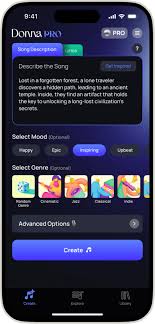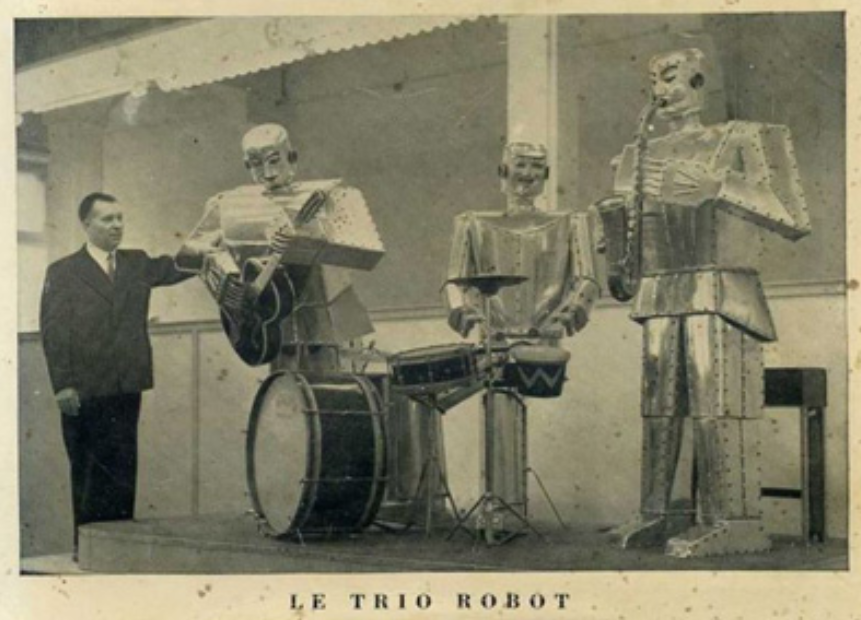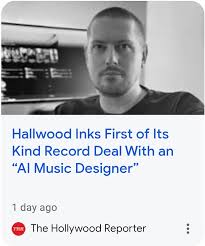Artificial Intelligence has redefined what's possible in creative industries, and OpenAI Jukebox is one of the most fascinating examples of that transformation. While many AI tools generate symbolic music like MIDI files, OpenAI Jukebox broke new ground by producing raw audio with lyrics, vocals, and real instrument simulation.
If you're exploring the intersection of AI and creativity, especially in music, it's important to understand how OpenAI Jukebox demonstrates real-world AI use cases that extend far beyond tech demos. From virtual artists to film scoring, Jukebox offers a glimpse into how neural networks can collaborate in human-like ways.
This article explores the key capabilities of OpenAI Jukebox, practical AI use cases it unlocked, and how it fits into today’s broader ecosystem of generative AI tools.

What Is OpenAI Jukebox?
OpenAI Jukebox is a neural network for generating music in the raw audio domain. It was trained on over 1.2 million songs across multiple genres and languages, along with their lyrics and metadata.
Unlike typical AI music tools that output notes or sheet music, Jukebox creates full music recordings—complete with realistic vocals and instrumentals—without any human mixing or production.
It uses a VQ-VAE-2 architecture paired with transformers to generate audio at different resolutions:
Top-level tokens model long-range coherence
Middle and bottom-level tokens add finer sound textures
Core Features of OpenAI Jukebox
Here’s what made Jukebox unique in the AI music space:
Artist and genre conditioning: Generate music in the style of known artists like Elvis, Ella Fitzgerald, or Kanye West.
Lyric input: Feed custom lyrics and have the model sing them in a chosen style.
End-to-end audio generation: Output is a waveform, not just symbolic notation.
Creativity through sampling: Some outputs feel like remixed or dreamlike variations of real artists.
These features made it one of the first AI systems capable of vocal music synthesis at scale, paving the way for new applications in songwriting, entertainment, and education.
AI Use Cases Unlocked by OpenAI Jukebox
Music Prototyping for Songwriters
One of the most promising applications is for rapid idea generation. Songwriters can input a rough set of lyrics and receive a full music track in return, helping them explore melody, rhythm, and vibe without a studio.
Use case example:
An independent pop artist could generate 5 different musical drafts of a single lyrical idea in various styles (EDM, lo-fi, R&B), and choose the best one to develop further with live production.
Sound Design and Experimentation
Because Jukebox generates audio at different abstraction levels, it offers value for sound designers and experimental composers who want to break away from conventional instruments.
Use case example:
Film composers working on sci-fi or fantasy projects might use Jukebox to create ambient textures or surreal audio collages that wouldn’t be possible with traditional synthesis.
AI Training Data for Future Models
The way Jukebox models long-term structure and audio fidelity provides a blueprint for more recent models like Suno AI and Udio.
Use case example:
Developers training multi-modal generative tools (audio + text) can study how Jukebox handles sequential data, structure, and coherence to inform future architectures.
Education and Music Research
Universities and research centers have used Jukebox to study:
How AI interprets genre
What it learns about musical structure
The role of conditioning variables (artist, genre, lyrics)
Use case example:
An academic course on AI and creativity could use Jukebox-generated tracks to compare algorithmic output with human composition across time and style.
Virtual Artists and Synthetic Performers
By simulating the sound of famous singers—or creating entirely new ones—Jukebox laid the foundation for virtual pop stars and AI-driven musical personas.
Use case example:
A game developer could use Jukebox to create a soundtrack performed by an entirely fictional AI artist, tailored to the game’s lore or aesthetic.
Limitations to Keep in Mind
Despite its novelty, OpenAI Jukebox has serious practical limitations:
Massive compute requirements: Inference takes hours and demands GPUs with large VRAM.
No official interface: It’s code-only unless accessed through community-hosted demos.
Low control over composition: You can’t structure verses and choruses with precision.
Vocals can be garbled: Although fascinating, many outputs sound dreamy or distorted.
These gaps are part of why newer tools like Suno AI or AIVA are now more popular for hands-on music creation.
Where Can You Try Jukebox Today?
OpenAI does not currently host a public web demo, but developers have mirrored parts of the model on:
Hugging Face Spaces (e.g.,
rish-16/Jukebox)Google Colab notebooks (with setup help)
GitHub repositories like openai/jukebox
Still, it remains largely an experimental tool for now, ideal for tech-savvy users rather than everyday musicians.
FAQ: Common Questions About OpenAI Jukebox
Q1: Can I use OpenAI Jukebox commercially?
No, the license is non-commercial and experimental. You cannot monetize the outputs directly.
Q2: Does OpenAI still support Jukebox?
The project is open-source but not actively updated. Newer tools have overtaken it in usability.
Q3: What’s the difference between Jukebox and Suno?
Jukebox is research-grade and complex, while Suno is a plug-and-play AI song generator with better vocals and real-time results.
Q4: Does Jukebox support custom vocals?
Yes, but only via conditioning. You can’t upload your own voice or control pitch/phrasing.
Q5: Is it possible to fine-tune Jukebox?
Technically yes, but it requires advanced ML knowledge and considerable hardware resources.
Conclusion: Why OpenAI Jukebox Still Matters in 2025
Even though it’s not the easiest tool to use, OpenAI Jukebox remains a milestone in the evolution of AI music generation. It showed that machines could generate raw audio, blend lyrical meaning with melody, and hint at the creative potential of neural networks.
While newer tools offer more polish and user control, Jukebox is still an important reference point for AI use cases in music, from virtual performers to creative prototyping and AI research. Understanding its architecture and capabilities gives creators and technologists valuable insight into where generative audio is headed next.
Learn more about AI MUSIC








